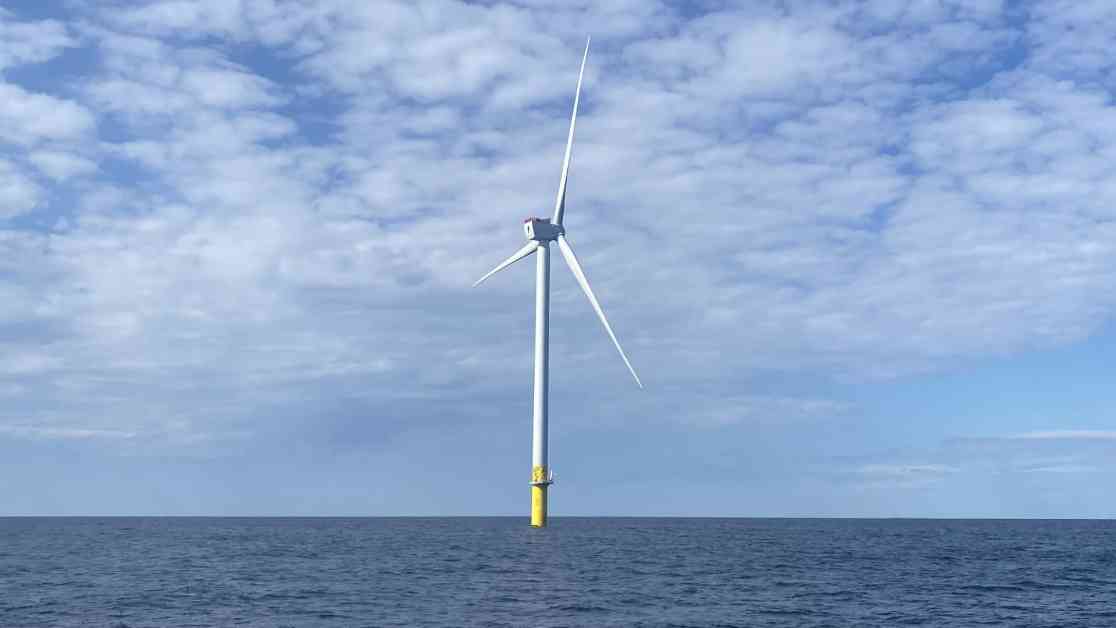Offshore wind power is gaining momentum in the U.S., with the South Fork Wind farm off the coast of Montauk, New York, leading the way as the first commercial-scale offshore wind farm in the country. This project, developed by Orsted, consists of 12 turbines that generate enough power for 70,000 homes each year. Despite facing challenges such as rising interest rates and supply chain issues, South Fork Wind is proof that offshore wind projects can succeed.
The journey to South Fork Wind is an impressive one, requiring a two-hour high-speed ferry ride from Greenport, New York. The turbines, standing at 460 feet tall with blades longer than a football field, are a sight to behold. Each turbine is connected to an offshore substation, a first of its kind in the U.S., which then links to the local power grid in East Hampton via a 65-mile cable. The project faced opposition from fishermen and residents, but Orsted made adjustments to address concerns and ensure the area remained accessible.
Orsted’s experience in offshore wind development is evident, with successful projects like the Block Island Wind Farm and upcoming ventures like Revolution Wind and Sunrise Wind. The process of building offshore wind farms is complex and requires years of planning and securing permits. Power purchase agreements play a crucial role in financing these projects, providing long-term revenue certainty but also posing challenges if costs escalate.
Financial issues, particularly related to interest rates and supply chain limitations, have impacted offshore wind projects across the industry. However, efforts to address these challenges are underway, with initiatives like the development of specialized vessels and the establishment of offshore wind port hubs. While progress towards the Biden administration’s goal of 30 gigawatts of offshore wind power by 2030 may be slow, the industry is resilient and adapting to overcome obstacles.
Despite setbacks like the pause in construction at Vineyard Wind due to a blade incident, offshore wind power remains a promising source of renewable energy in the U.S. With multiple projects in the pipeline and billions of dollars of investment expected in the coming years, the offshore wind industry is poised for growth. While adjustments are being made in response to current challenges, the overall outlook for offshore wind power in the U.S. is positive, signaling a shift towards a more sustainable energy future.

















